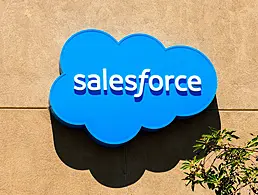Laura Ryan of Dropbox says demand for more flexibility is here to stay, and companies that don’t embrace this trend will struggle to attract talent.
The pandemic has led to plenty of companies transforming the way their teams work. While many have opted to do away with their offices and go for a remote-first approach, others have switched to a hybrid model that has employees coming in two or three days a week.
Other hybrid models are even more flexible and allow employees to choose when they come into the office, if at all.
In October 2020 Dropbox announced its new working plan, committing to a ‘virtual-first’ approach that would include collaborative spaces and non-linear workdays for its employees in Dublin and further afield.
Then in June 2021, we got a first look at the new redesigned offices, known as Dropbox Studios.
Now in full swing, we heard from Laura Ryan, VP of the company’s global HRBP team, about how its virtual-first model has been working.
“Dropbox Studios are spaces where our people can meet in person, on average once a week, to collaborate with their colleagues and gather for team-building activities. They are not, on the flipside, intended for solo work, and there are no individual work stations, for example,” she said.
“Instead, our teams come to our Dublin Studio to connect in person around a shared purpose – whether that’s for team off-sites, culture building, learning and development activities, events or collaboration.”
Ryan said the virtual-first approach is “deliberately different” from other hybrid models, which the company wanted to avoid on the basis that it often allows people to self-select whether they are in or out of an office.
“This can result in a lack of equity across the employee experience. Instead, virtual-first provides a level playing field for all employees, with an emphasis on preserving connection, flexibility and work-life harmony,” she explained.
“While we are still in the early phases of living this way of working, we anticipate employees will use these spaces around once a week, with many using them for team gatherings, cross-functional off-sites and in-person planning meetings.”
Ryan added that moving to a remote model of work also decentralises the company’s HQ, meaning employees outside the US can take global roles that would have previously required them to move to San Francisco.
“No longer disadvantaged by being outside of a physical HQ, all employees – including myself – have had more opportunities to advance their careers and find greater room for development, without sacrificing on location.”
Employee feedback
Before the company opted for its current model, Ryan said that more than 74pc of Dropbox employees wanted to work remotely on a regular or partial basis, so flexibility was a key part of the working plan.
“Over the next few years, we’ll see that companies who can provide flexibility will outperform, out-attract, and out-retain the companies that don’t,” she said.
“Since launching virtual first, 78pc of employees have told us that they feel more productive as a result and 72pc feel they had a better work-life balance.”
Ryan also said that the new working model has been cited by prospective candidates as a key reason they want to join the team and the applications for roles have increased in 2021 compared to 2020.
“That said, Dropbox is still on a journey of discovery and, as an HR leader, it’s my job to continue to take the pulse of our employees on how our virtual-first strategy is working for them.”
Addressing challenges
As companies find their feet with new working arrangements, Ryan said one of the key challenges Dropbox faced with the new model was ensuring employees could connect with colleagues outside of their immediate team.
“While virtual-first is inclusive of some in-person interaction, the last two-plus years of Covid restrictions eliminated the opportunity for the kind of spontaneous connections that happen in office life. Without the ability to bump into co-workers in the hall or overhear a casual conversation, there’s been less chance for employees to get to know people outside their daily orbit,” she said.
“Now open, our Dropbox Studios will play a key role in providing our people with space to collaborate face to face – and they will be key hubs for collaboration, team off-sites and socials. However, our virtual community-building efforts are just as important as in-person programming to strengthen relationships in our day-to-day interactions between the in-person events.
“For example, we’ve also shifted our approach to community building with the recent launch of Dropbox Neighborhoods. Run by local community managers, Neighborhoods group together employees who are close in location on Slack to arrange everything from events, volunteering days and informal meet-ups. And we encourage sharing fun life updates or simply the best new restaurant in town.”
Advice for leaders
With more people citing flexibility as a reason for moving jobs, Ryan said this will be a critical trend for leaders to pay attention to moving forward.
“The demand for greater flexibility is here to stay, and those who do not embrace this will struggle to attract the very best talent,” she said.
“But today, we’re also living in a mission-driven era; one in which people are seeking a greater sense of purpose in their lives, and that includes work.”
She said that while pay will always be important, employees are seeking company values that align with their own and, in order to tackle this, companies need to unlock “a deeper purpose”.
“Clear communication and skillful leadership will be needed, to help join up the dots so that employees buy in and see themselves as part of the company’s future.”
10 things you need to know direct to your inbox every weekday. Sign up for the Daily Brief, Silicon Republic’s digest of essential sci-tech news.




